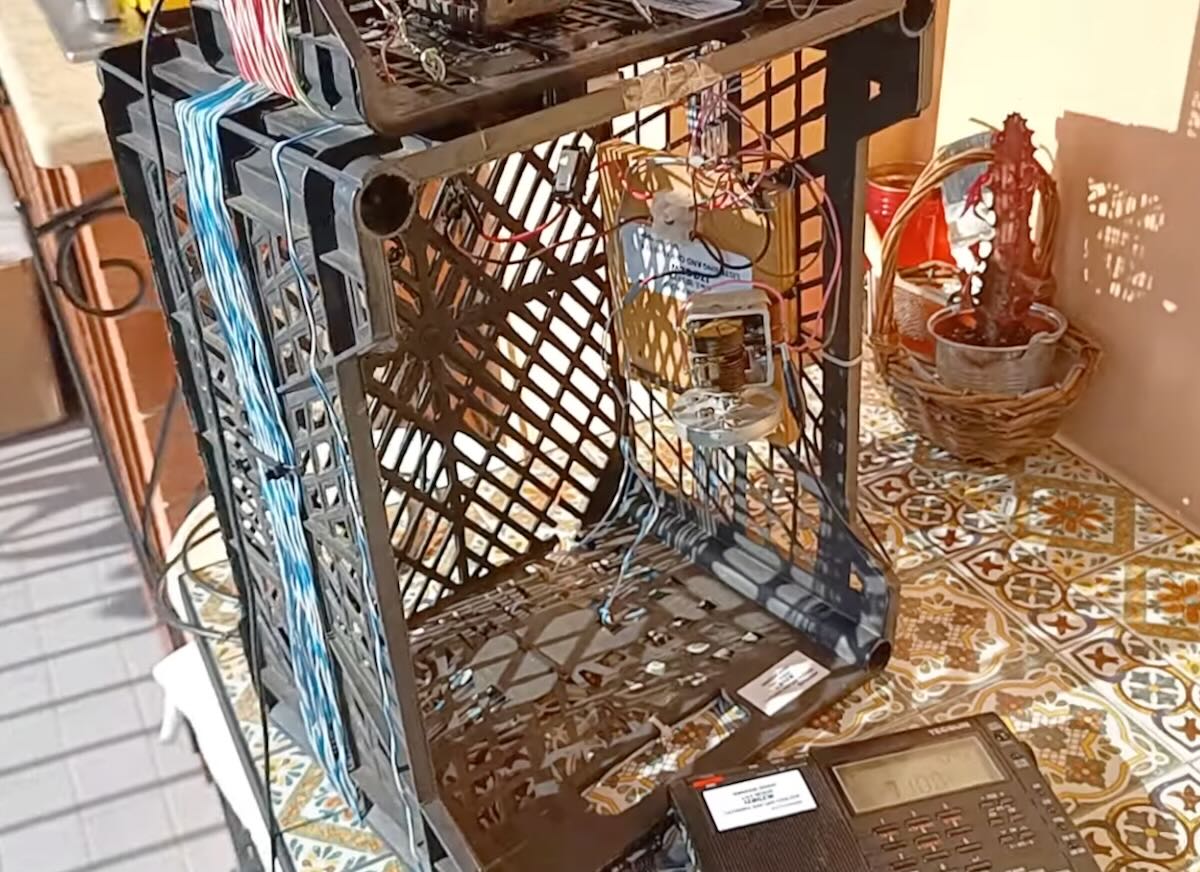 Many thanks to SWLing Post contributor, Giuseppe Morlè (IZ0GZW), who writes:
Many thanks to SWLing Post contributor, Giuseppe Morlè (IZ0GZW), who writes:
Dear Thomas and Friends of the SWLing Post,
I’m Giuseppe Morlè from central Italy, Formia on the Tyrrhenian Sea…
My Cassette Loop experiment this time shows how induction takes place on short waves after medium waves.
I used a smaller box as the primary antenna which, however, is pushed by the secondary one due to the induction effect generated between the two windings brought closer together.
This way, the larger loop “captures” more of the signal and sends it to the smaller cassette…
I really like working on induction… I hope you like it:
Click here to view on YouTube.
Thanks and greetings from central Italy.
73. Giuseppe Morlè iz0gzw.
Thank you so much for sharing this, Giuseppe!

Interesting. For some time, I used two loop antennae, a ferrite loopstick and a hula-loop. Both had their own variable capacitors, so I had to sinchronize them to achieve optimum tuning. The loopstick was better for frequencies lower than 9MHz and the hula-loop was better above 9MHz. This ferrite loopstick antenna came with a preamp that also worked by induction. It had its own tiny loopstic ferrite antenna. I also used this preamp with hula-loop antennae too. Nowadays, I only use hula-loop antennae with built in preamp which don’t require any tuning covering 135-30.000kHz.
Thanks Frank,
the fruit crates fit very well for our experiments…
I wish you a Merry Christmas and excellent listening.
73. Giuseppe.
Great experiment Giuseppe. My first longwave loop used a milk crate like this with a 3 section variable cap in series to tune it. I placed the radio, which had an internal ferrite loopstick, inside the crate. It worked very well and I think the range was about 160 kHz to 300 kHz.